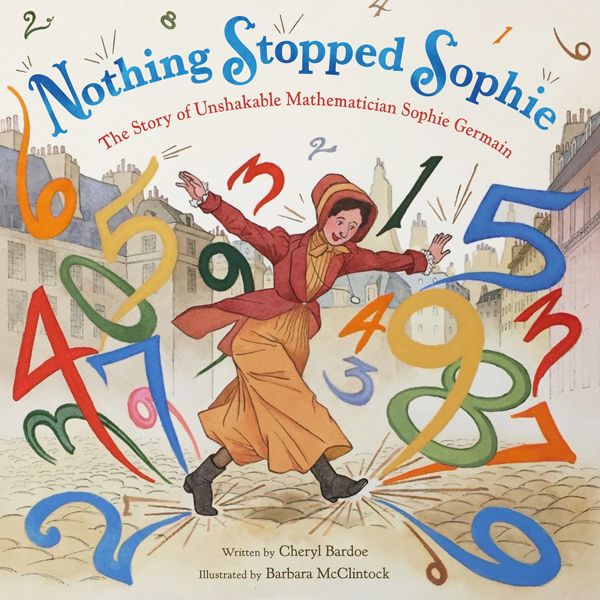
Nothing Stopped Sophie: The Story of Unshakable Mathematician Sophie German
By Cheryl Bardoe
Illustrators
Illustrated by Barbara McClintock
Edition
2019 Mathical Prize Winner, Ages 05-07
2019 Golden Kite Award Honor, Picture Book Illustration
CCBC Choices 2019 Choice: Historical People, Places, and Events
NSTA Best STEM Books - 2019
By Cheryl Bardoe
Hardcover edition
Publisher Hachette Book Group Imprint Little, Brown ISBN9780316278201
Awards and Honors 2019 Cook Prize Honor2019 Mathical Prize Winner, Ages 05-07
2019 Golden Kite Award Honor, Picture Book Illustration
CCBC Choices 2019 Choice: Historical People, Places, and Events
NSTA Best STEM Books - 2019
Nothing Stopped Sophie: The Story of Unshakable Mathematician Sophie German
 6
6
Out of stock
SKU
9780316278201J
This is the true story of eighteenth-century mathematician Sophie Germain, who solved the unsolvable to achieve her dream. More about Sophie Germain. Note on referenced math and science concepts. How to re-create an experiment in the book.
Selected bibliography. Author’s note. Illustrator’s note. Full-color illustrations created with markers, gouache, and collage.
Selected bibliography. Author’s note. Illustrator’s note. Full-color illustrations created with markers, gouache, and collage.
|
Standard MARC Records Cover Art |
Biography Elementary Plus (Grades 1-4)
Biography Elementary Plus
Biography Elementary Plus (Grades 1-4)
For Grades 1-4
This 14 book collections offers beginning readers fascinating biographies and compelling personal stories that provide a view into history or perspective on the issues of our times.
14 books per Year
$282.52 per Year
Interests
Biographies, Nonfiction, Science/STEAM





